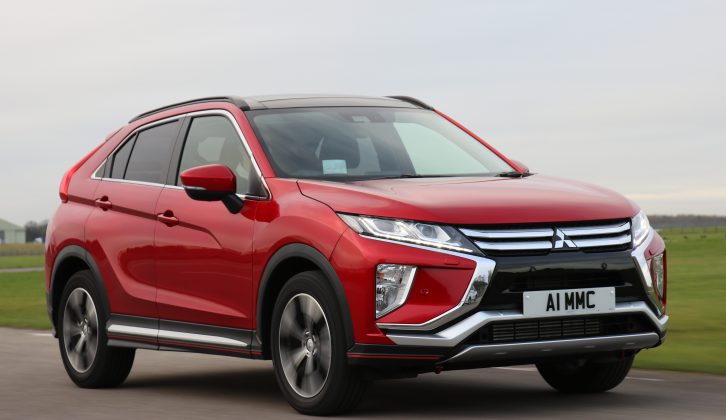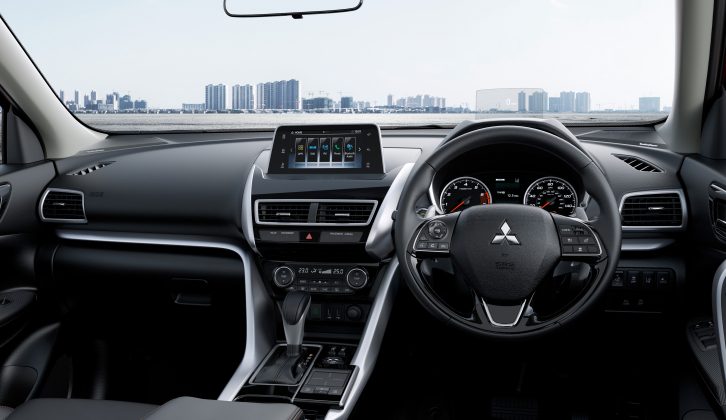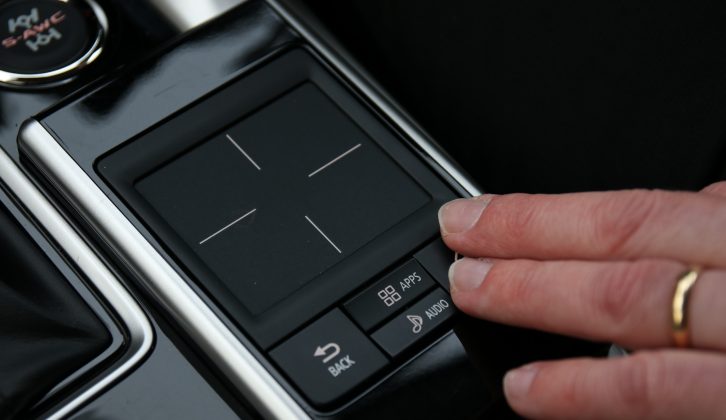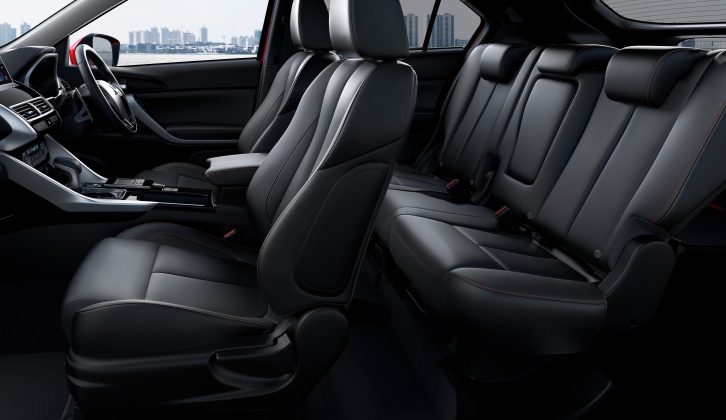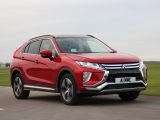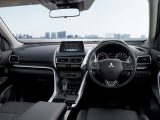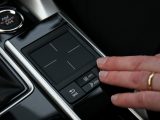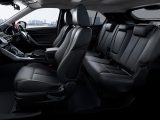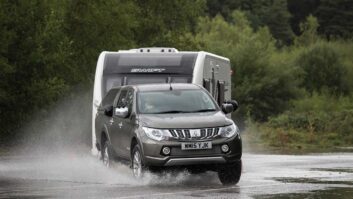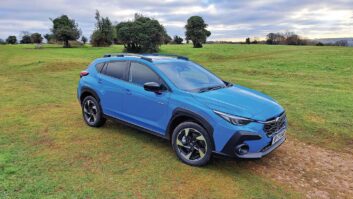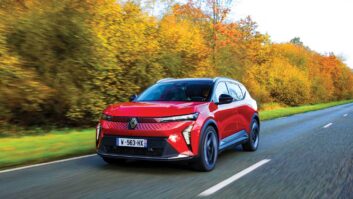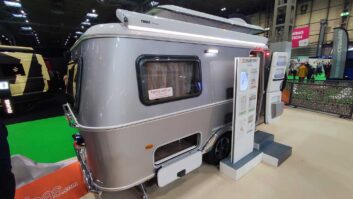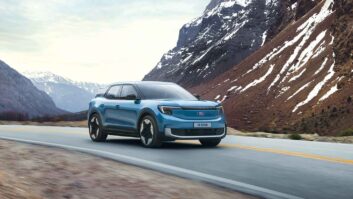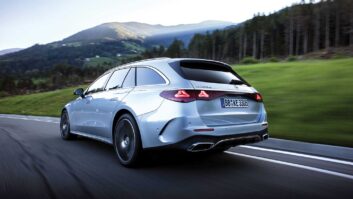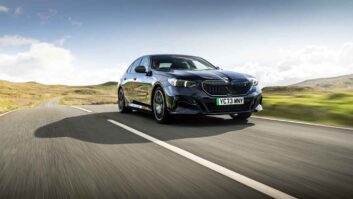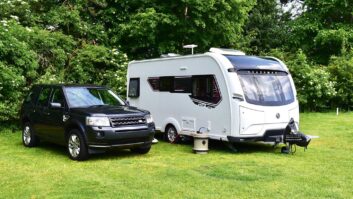Mitsubishi is cementing its position as an SUV specialist with the launch of the new Eclipse Cross.
Size-wise it sits between the ASX and the Outlander, so think of it as a rival for the Hyundai Tucson, Nissan Qashqai and Seat Ateca.
Those are all capable cars, and the Eclipse will have its work cut out if it’s not to be – ahem – eclipsed.
Petrol only
From a towing perspective it starts at a disadvantage as the only engine option is a petrol.
A 2.2-litre diesel could join the range by the end of the year, but that’s by no means certain.
Still, if you’ve decided against diesel power for your next tow car, this new Mitsubishi is worth a look.
To our eyes it’s one of the most stylish compact SUVs and all versions are generously equipped.
Your one and only engine option is a 1.5-litre turbocharged petrol engine producing 163PS (161bhp) and 184lb ft of torque.
That compares with 148bhp and an identical torque figure for the equivalent 1.4 TSI petrol engine in the Seat Ateca and other VW Group cars.
A strong solo performance
In solo driving it performs well enough.
Maximum torque arrives from just 1800rpm, but if you are used to diesel power you’ll find the Eclipse’s petrol engine needs revs to really get shifting.
If you already drive a petrol, the 1.5-litre unit’s power delivery won’t take any getting used to.
Fuel economy isn’t great, though. The manual 2WD achieves 42.8mpg on the combined cycle and emits 151g/km of carbon dioxide.
What tow car potential does it have?
How well will the 1.5 tow? We’d anticipate respectable performance from the Mitsubishi Eclipse Cross.
Two-wheel-drive manual cars have kerbweights from 1500kg (including 75kg for the driver not included in Mitsubishi’s published kerbweight), giving an 85% match figure of 1275kg.
The 4WD automatic weighs upwards of 1595kg, which means an 85% match of 1356kg. Both have legal towing limits of 1600kg.
The manual cars have a six-speed gearbox, whereas the automatics use a Continuously Variable Transmission (CVT).
Usually, the latter makes for noisy progress, holding high revs under acceleration while adjusting the gearing to build speed.
However, Mitsubishi has understood that while theoretically very efficient, CVTs aren’t very pleasant to use.
So instead of continuously varying the gearing, the Eclipse’s gearbox uses eight set ratios, effectively mimicking the behaviour of a conventional gearbox.
It works very well. In fact, we preferred the smooth-shifting CVT auto to the manual, which has a long throw and a slightly clunky shift action.
Ready for year-round touring
All manuals are front-wheel drive, but with the auto you can choose either 2WD or 4WD versions.
The 4WD cars use Mitsubishi’s S-AWC (Super-All Wheel Control) system. In regular driving, torque is split 80% to the front wheels and 20% to the rear, but the system can automatically send up to 45% of engine torque to the rear wheels if the going gets slippery.
As well as the standard Auto mode, there are Snow and Gravel settings to optimise traction in different conditions.
S-AWC can also manage the torque split between the left and right sides of the car, and selectively apply the brakes to improve handling and stability.
Clever stuff, although driving at sensible speeds you’d be hard-pressed to notice much difference in the cornering behaviour of two- and four-wheel-drive cars. Both have sharp steering and good grip.
The ride is mostly comfortable in the Mitsubishi Eclipse Cross, too, especially at high speeds. But it can become fussy and fidgety over patchy surfaces.
The cabin is quiet enough to make long journeys no chore. There’s some wind noise from around the door mirrors, but engine and road noise are no more than a background murmur.
What’s it like inside?
The cabin is a pleasant place in which to while away the miles. Mitsubishis are usually solidly built, but the materials used look rather cheap and unappealing.
The new Mitsubishi Eclipse Cross has a more expensive look and feel, with soft-touch plastics on the top of the dash and a crisp, modern design.
A seven-inch touchscreen perches above the centre console. There’s also a trackpad-style controller near the gearstick. We found it awkward to use on the move, although some colleagues took to it more readily. Perhaps it’s a generational thing?
Your age (and your mobile phone contract) may also effect how you perceive the absence of a built-in sat-nav, even on top-spec cars.
Instead, the Eclipse Cross uses Apple CarPlay or Android Auto to show navigation on the touchscreen, via a connected smartphone with a navigation app. We’d much rather have a built-in system.
Moving to the back of the car, there’s lots of legroom with the rear bench slid all the way back on its runners, although headroom is tight in cars with a panoramic sunroof fitted.
Boot space is disappointing, although you can use the sliding rear seats to squeeze in a few more bags if you don’t mind losing some legroom.
With the seats fully back there’s just 341 litres, compared with a Seat Ateca’s 510 litres.
There is space to store the parcel shelf under the floor if you want to load up to the ceiling.
What does it cost?
Prices start from £21,275. That’s more than the starting price of many rivals, but it’s not expensive when you weigh up the car’s performance and equipment.
The entry-level ‘2’ spec (there’s no ‘1’ so the neighbours don’t think you’re tight-fisted) comes with 16-inch alloys, smartphone connectivity, a DAB radio, Bluetooth, a rear-view camera, cruise control, climate control and seven airbags.
Step up to ‘3’ trim for 18-inch alloy wheels, a head-up display, heated front seats, dual-zone climate control, front and rear parking sensors, and keyless entry and starting.
Upgrade to ‘4’ spec for a leather interior, a nine-speaker stereo, a panoramic sunroof and additional safety aids such as a blind spot warning system.
First Edition cars, of which just 250 will be sold, have all the kit fitted to the ‘4’ plus some styling enhancements and premium red metallic paint.
The Mitsubishi Eclipse Cross is a decent car. It’s good looking, well equipped and drives nicely.
For now though, its appeal as a tow car will be limited by the absence of diesel power.
Fingers crossed Mitsubishi will import the 2.2 diesel so the Eclipse can fulfil its potential.
The new Mitsubishi Eclipse Cross has an expensive look and feel
